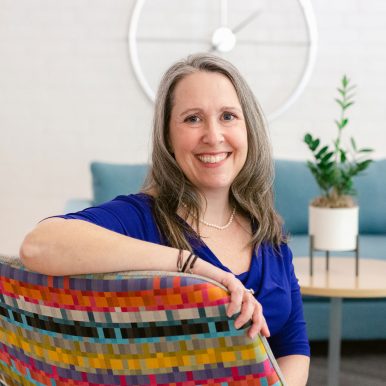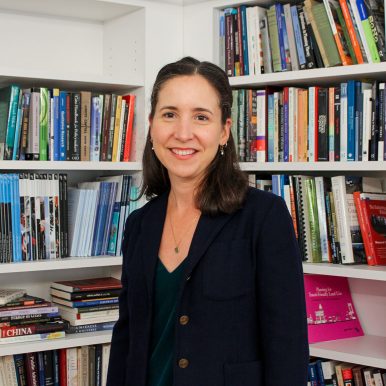Falling short
Accounting firms feel labor squeeze
M.J. McAteer //March 30, 2023//
In the accounting field, the books are out of balance. Demand for the profession’s services is rising, which is one for the assets column, but on the debit side of the ledger, the number of people willing and able to provide those services is dropping so alarmingly that some firms are being forced to turn away clients.
Rectifying that imbalance is not going to be easy or perhaps even possible any time soon, and even in the long term, some creative accounting is going to be necessary to turn the situation around.
The profession’s numbers are being crunched from both ends, both nationwide and in Virginia.
The American Institute of Certified Public Accountants (AICPA) reports that 75% of the country’s CPAs reached retirement age in 2020, which, concurrent with the pandemic, helps explain a Bureau of Labor Statistics finding that 300,000 accountants and auditors — about 17% of the workforce — left the field between 2020 and 2022. Of those who left, about 35% to 40% were CPAs. That’s a substantial loss, considering that the number of accountants and auditors in the United States was about 1.5 million last year.
At the entry level of the profession, the numbers are correspondingly negative. In 2020, the AICPA reported 2.8% fewer accounting graduates at the bachelor’s degree level and 8.4% fewer at the master’s degree level. An August 2022 Deloitte poll found that four out of five hiring managers at public accounting firms and 69% at private firms reported that talent retention was a challenge. Workplace data provider Revelio Labs Inc. backs up those figures. For the first 11 months of 2022, there were 177,880 job postings in the accounting and auditing fields, and almost 64,500 of those openings were unfilled as of Nov. 30, 2022, Revelio Labs reports. In 2021, there were 141,340 openings in the industry.
“It’s a war,” declares Fran Randall, a partner and Richmond market leader for Forvis, one of the nation’s top 10 accounting firms. “Everyone is fighting for the same talent.”
Stephanie Peters, CEO and president of the Virginia Society of CPAs (VSCPA), seconds that assessment. The state has about 28,000 licensed CPAs, she says, but “even to maintain [those numbers] will be an effort.”
How did this happen?
The gap between supply and demand in the accountancy field can be traced to several bedrock issues.

First, the pool of available college graduates overall is shallower than it used to be, meaning that many professions, not just the accountancy field, face personnel shortages. The National Student Clearinghouse Research Center reported 662,000 fewer U.S. undergraduate students in spring 2022 than the previous year, a drop of 4.7%. And that shortfall “is just the appetizer round,” says George Forsythe, a managing partner in Richmond accounting firm WellsColeman. The downward demographics, he says, means that “the shortage of people is only going to get worse.”
“Every profession is experiencing this, but we [in the accountancy field] are getting more than our fair share,” agrees Gary Thomson, head of Richmond-based accounting and professional services consultancy Thomson Consulting and a former VSCPA chairman. “This is an acute situation.”
Why the situation has become so acute comes down to issues of time and money, plus the less quantifiable problem of image.
Earning a CPA license requires 150 credit hours — 30 credits more than the normal 120-hour requirement for a bachelor’s degree. Those extra hours add up to about a fifth year of college — along with all the sacrifice, study and tuition costs that commitment represents. The 16-hour CPA exam also is notoriously difficult. Typically demanding 300 to 400 hours of study, the exam has a first-time pass rate of only about 50%.
Yet all the extra work is not commensurately rewarded. The average salary for a CPA is just $62,410, according to the CPA Accounting Institute for Success, but financial analysts typically earn $95,570 a year and financial managers make an average of $131,710, according to the Bureau of Labor Statistics.
“That value proposition of that extended learning experience” is a big problem, says Royce D. Burnett, chair of Old Dominion University’s School of Accountancy, which has about 400 undergraduate accounting students and 20 to 25 students in its graduate program.

Finally, there’s the existential problem of the field’s decidedly unglamorous image. People picture an accountant “sitting alone behind a desk all day doing grunt work,” as Peters puts it. And when tax season rolls around, many accountants traditionally are swamped, with no time for their personal lives.
“Our profession has been known for its rough deadline schedule of 70-, 80-hour-plus weeks,” Thomson says. “That was expected when I came along, but you can’t reliably expect that anymore. We have to modify our expectations. Sometimes different is difficult, but that is not a negative.”
‘A seismic shift’
“The pandemic was a time to have space to think about changes we should make,” says Virginia Tech’s Margaret Cowell, an associate professor of urban affairs and planning who specializes in economic development and labor force issues. “Change usually takes a long time, but this was a seismic shift.”
The result of that shift was the realization that accounting had “to provide a more flexible model. We have to go beyond the balance sheet to come up with more creative options,” she says. “Young people are demanding something different.”
That “different” starts with how accountants are educated.
“We have to create an environment that … [accounting students] can embrace,” Burnett says. Accepting online learning was a start. That was unheard of 10 years ago, Cowell says, but now it’s par for the course.

However, the Virginia Tech professor believes that remote learning is just the beginning of what may be necessary to reverse falling enrollment. She expects that educational institutions will need to face much more difficult questions, such as, “Do we need to require so many credits? Are all the courses essential? [And] what can we convey in half the credit hours?”
Additionally, schools will need to be vigilant in assessing whether their curricula have kept pace with modern accounting needs. Today’s CPA performs “less data entry and more analytics,” says Thomson, and Burnett admits that schools have not exactly been “Johnny to the gate” on technology.
Also overripe for change is the compensation earned by accountants and auditors, who are likely to be very familiar with what other professionals are earning.
“Salaries across the board are increasing,” says Peters, especially in fields with major labor shortages.
WellsColeman is typical in having had to increase pay “dramatically” to attract and retain employees, Forsythe notes. Some firms help employees cover the time and cost of the additional educational hours needed to pass the CPA exam, too.
For example, KPMG, one of the nation’s largest accounting firms, is offering employees
two months’ salary to study for the test, which will be cut in half next year to eight hours and updated to better reflect current technology.
Compensation has become much more than a matter of numbers, though. The willingness of workers of any age to put in marathon hours has virtually evaporated, and firms have instituted much more liberal leave policies, such as flexible personal days off, as long as the work gets done.
Firms also are expanding the amount and type of benefits offered to employees. At Keiter, a Henrico County CPA firm with more than 100 accountants, the leave package for new parents has been broadened to include employees who need to care for extended family members, says Managing Partner Gary Wallace.
Greg Wallig, managing principal of Grant Thornton LLP’s Metro D.C.-Arlington office, says that health and wellness perks and support for continuing education also are extremely important to his firm’s employees.
Culture, rarely spoken of 20 years ago, matters greatly too.
“People are interested in what is the company’s vision,” Wallace says. “What are its values?” Firms such as Forvis, which formed last year from the merger of Dixon Hughes Goodman LLP and BKD CPAs & Advisors, stress their commitment to their own people and not just to their clients.
“It’s not just trickle-down,” Randall says of boss-employee interactions. “It goes both ways.”
Short- and long-term solutions
Faced with a dribbling pipeline of potential hires, accounting firms have had to become much more proactive about increasing their outreach.
“We have to blow our own horn,” says Peters. “We have to show that accounting is a dynamic profession, not just sitting behind your desk doing grunt work anymore.”
One way many practices are trying to do that is by dramatically expanding their campus outreach, far beyond just offering internships. Keiter, for instance, now has two full-time recruiting coordinators available to coach students and listen to any concerns they might have about a career in accounting. Forvis does too.
“We have intentionally increased our presence on college campuses,” Randall says, “and are actively involved with professors, organizations and students directly.”
At the same time, recruiting minorities has taken on increased urgency. The most recent AICPA Trends Report found that only 7% of accountancy graduates identified as Black, 9% as Asian and 13% as Hispanic. To improve those numbers, ODU held a weeklong National Association of Black Accountants seminar on its campus last summer, while companies such as Grant Thornton have become a regular presence on historically Black college and university campuses.
Beyond these efforts, companies’ leaders have been forced to adopt more open minds about who might make a good fit for their firms. Experienced workers can be particularly hard to come by, and companies such as Keiter now are happy to rehire former employees.
“We’ve been mindful to keep in touch with folks who left the firm,” Wallace says, “and [we] had good success in getting them back.”
WellsColeman is similarly open to less-than-conventional hires these days. The firm recently added to its payroll 30-year-old Brett Shea. He had been working as an arborist for five years, despite having an accounting degree. “Twenty years ago, people would be like, ‘You’re crazy,’” Forsythe says of Shea’s hiring, “but if someone is smart and capable, we are interested.”
Shea values the stability and financial prospects of the accounting profession. In a time of economic uncertainty and widespread layoffs in the tech field, accountancy is widely regarded as recession-resistant.
Like other millennial workers, Shea was impressed by WellsColeman’s connection to the community. The company serves many local clients, and that, he says, makes him feel that he is a part of something.
His employers managed to hit another millennial sweet spot with Shea by making it clear that WellsColeman cares about its staff. “George [Forsythe] is transparent about the steps that he takes so that we all stay happy,” he says.
In the meantime, while hires like Shea remain rare, the accountancy field is making up staffing shortfalls by increasing hiring of part-time, freelance and seasonal workers.
Outsourcing and offshoring also has “risen with a speed like I’ve never seen before,” Thomson says, with much work ending up being sent to part-time accountants in other countries, a development that not all domestic clients find desirable. Those overseas accountants are considerably less costly than U.S.-based contractors, who often cost accounting firms more per hour than in-house staff, although their costs are offset by not receiving benefits.
Thomson says that many people are working on the problem of how to attract more workers to the accounting profession, and that “there’s a lot of activity, not just talk” about the problem.
“Getting a CPA [certification] is a no-brainer,” Peters says. “It is going to pay off.”
























